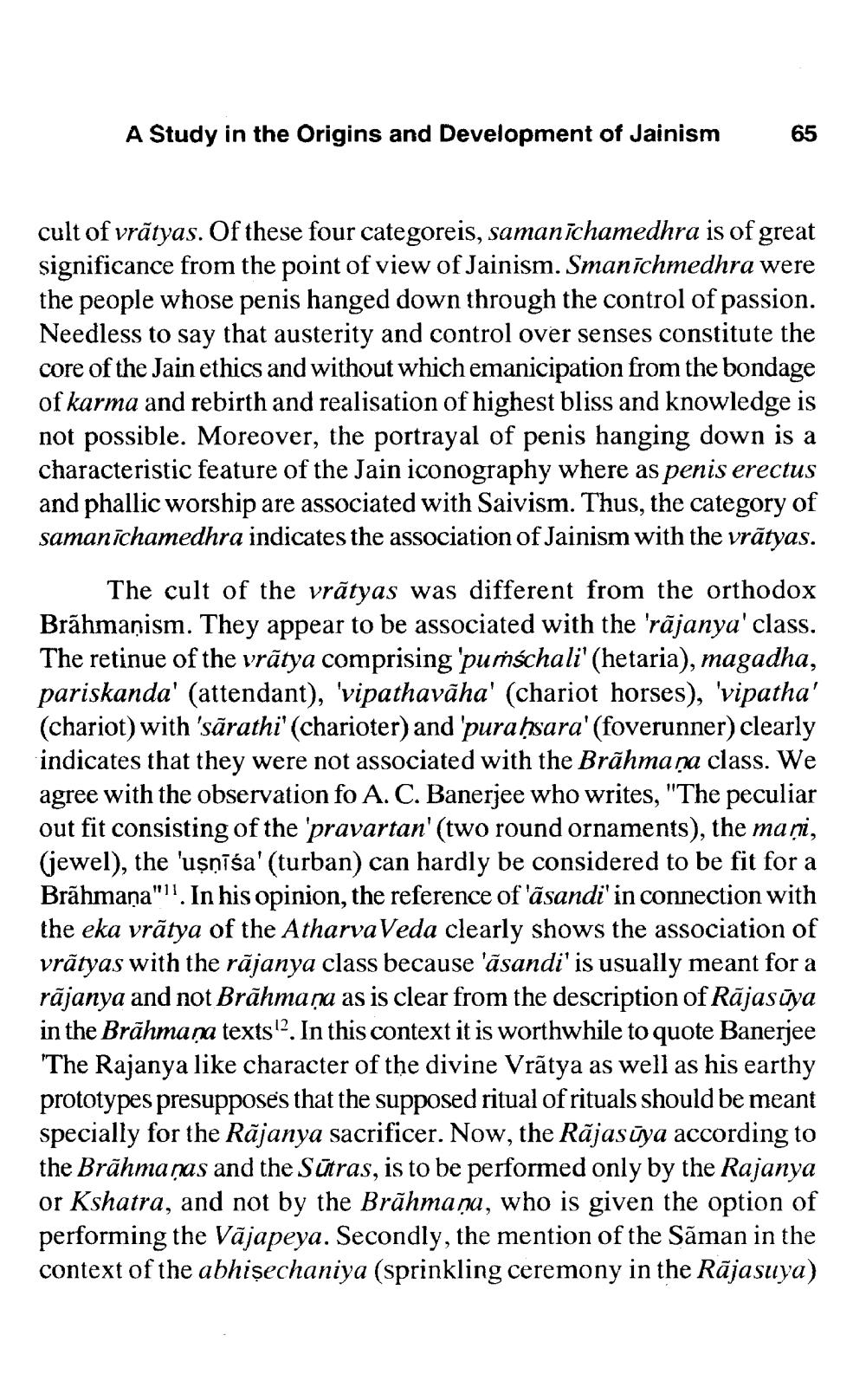________________
A Study in the Origins and Development of Jainism
65
cult of vrãtyas. Of these four categoreis, samanichamedhra is of great significance from the point of view of Jainism. Smanīchmedhra were the people whose penis hanged down through the control of passion. Needless to say that austerity and control over senses constitute the core of the Jain ethics and without which emanicipation from the bondage of karma and rebirth and realisation of highest bliss and knowledge is not possible. Moreover, the portrayal of penis hanging down is a characteristic feature of the Jain iconography where as penis erectus and phallic worship are associated with Saivism. Thus, the category of samanīchamedhra indicates the association of Jainism with the vrătyas.
The cult of the vrătyas was different from the orthodox Brāhmaṇism. They appear to be associated with the 'rājanya' class. The retinue of the vrátya comprising 'pumschali' (hetaria), magadha, pariskanda' (attendant), 'vipathavāha' (chariot horses), 'vipatha' (chariot) with 'sārathi'(charioter) and 'puraħsara' (foverunner) clearly indicates that they were not associated with the Brāhmaṇa class. We agree with the observation fo A. C. Banerjee who writes, "The peculiar out fit consisting of the 'pravartan' (two round ornaments), the maņi, (jewel), the 'uşniśa' (turban) can hardly be considered to be fit for a Brāhmaṇa"'l. In his opinion, the reference of 'āsandi' in connection with the eka vrătya of the Atharva Veda clearly shows the association of vrátyas with the răjanya class because 'asandi' is usually meant for a rājanya and not Brāhmaṇa as is clear from the description of Rājaswa in the Brāhmaṇa texts. In this context it is worthwhile to quote Banerjee 'The Rajanya like character of the divine Vrãtya as well as his earthy prototypes presupposes that the supposed ritual of rituals should be meant specially for the Rājanya sacrificer. Now, the Rājasūya according to the Brāhmaṇas and the Sūtras, is to be performed only by the Rajanya or Kshatra, and not by the Brāhmaṇa, who is given the option of performing the Vājapeya. Secondly, the mention of the Sãman in the context of the abhişechaniya (sprinkling ceremony in the Rājasuya)




